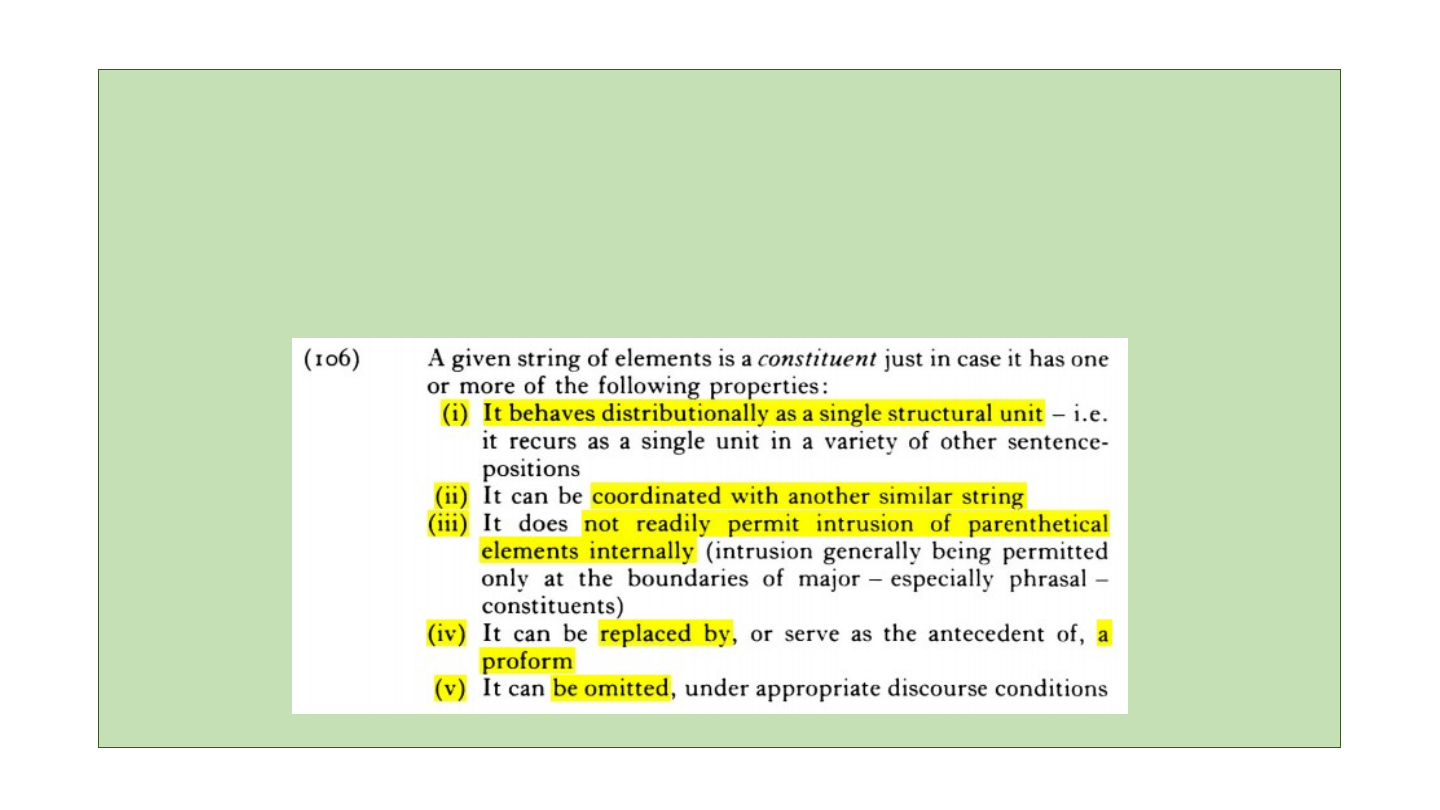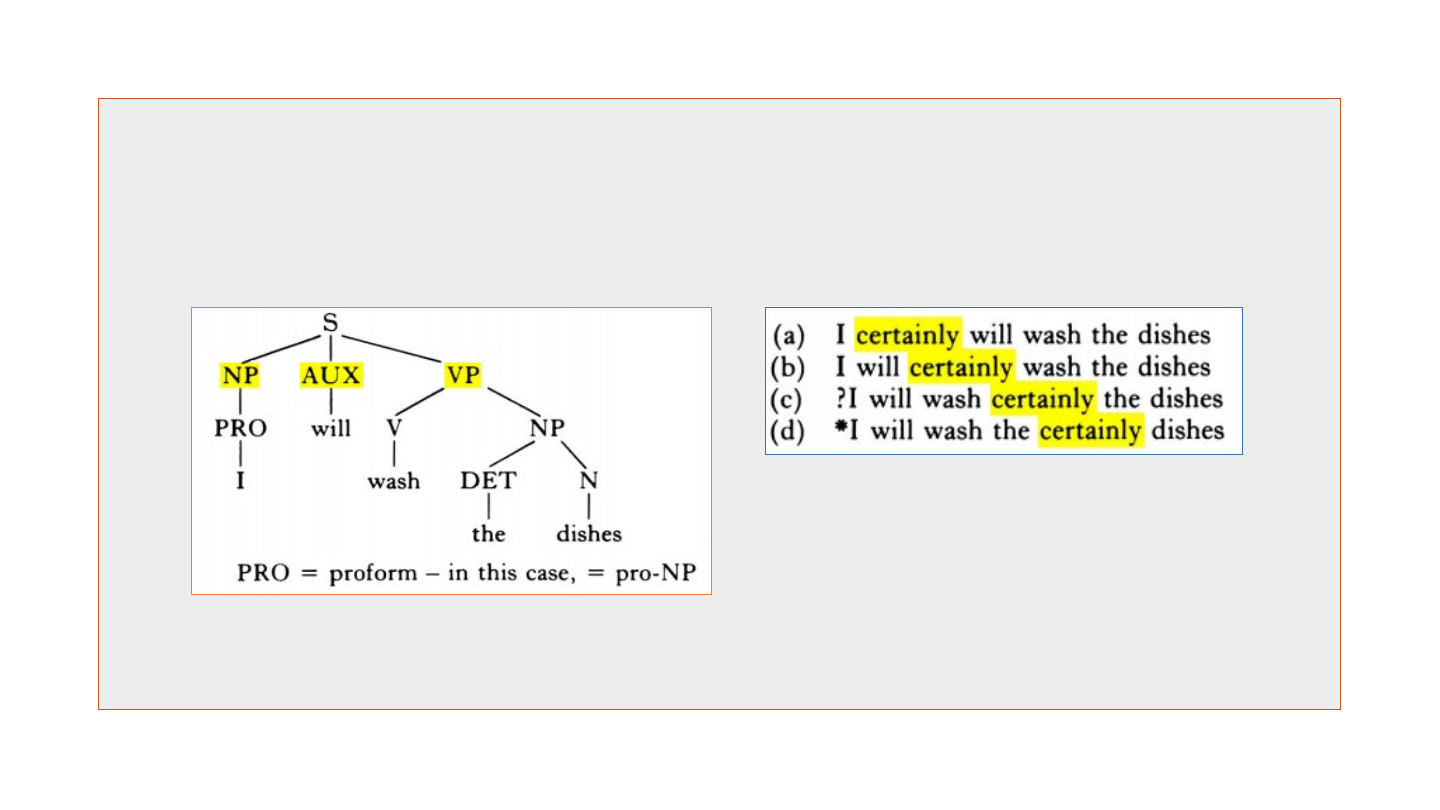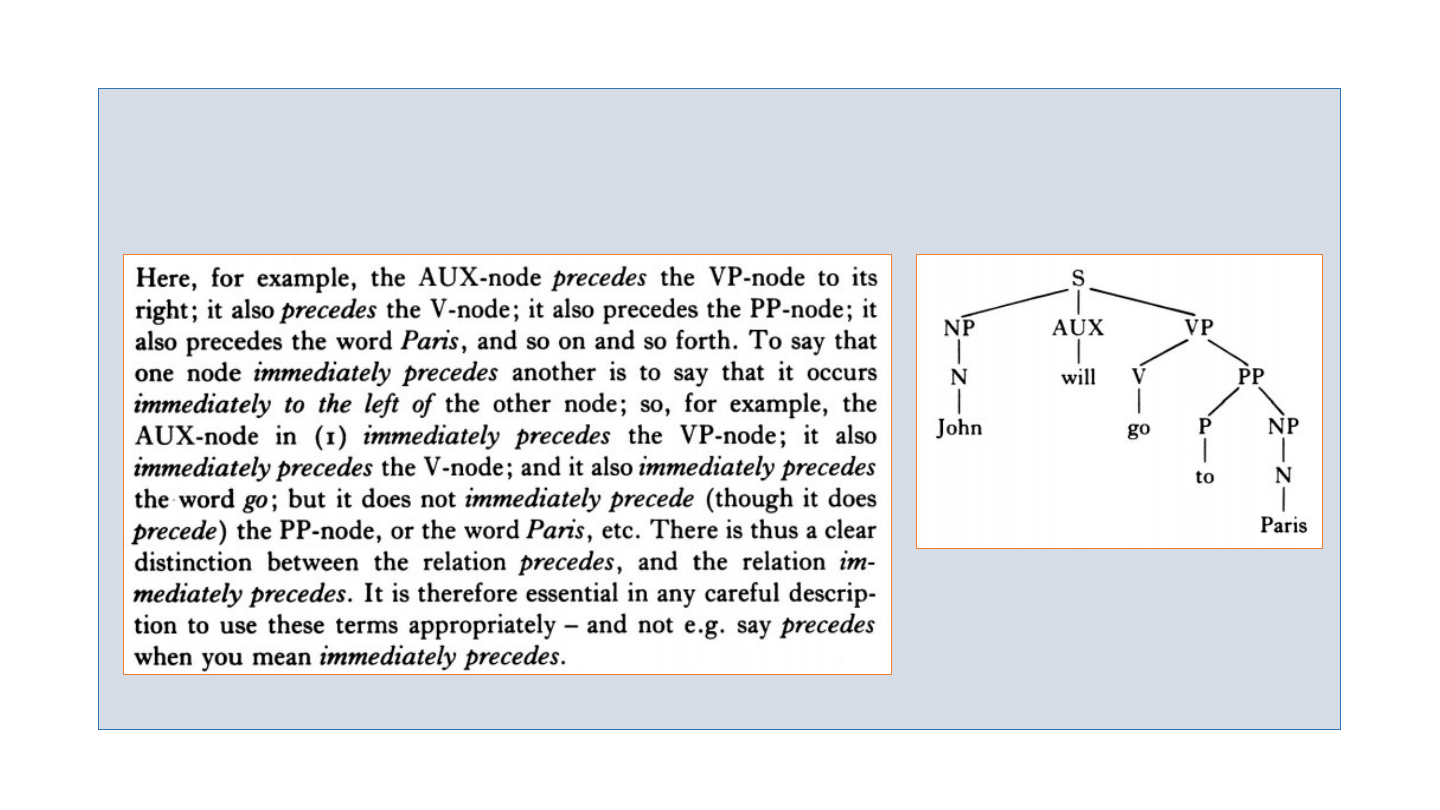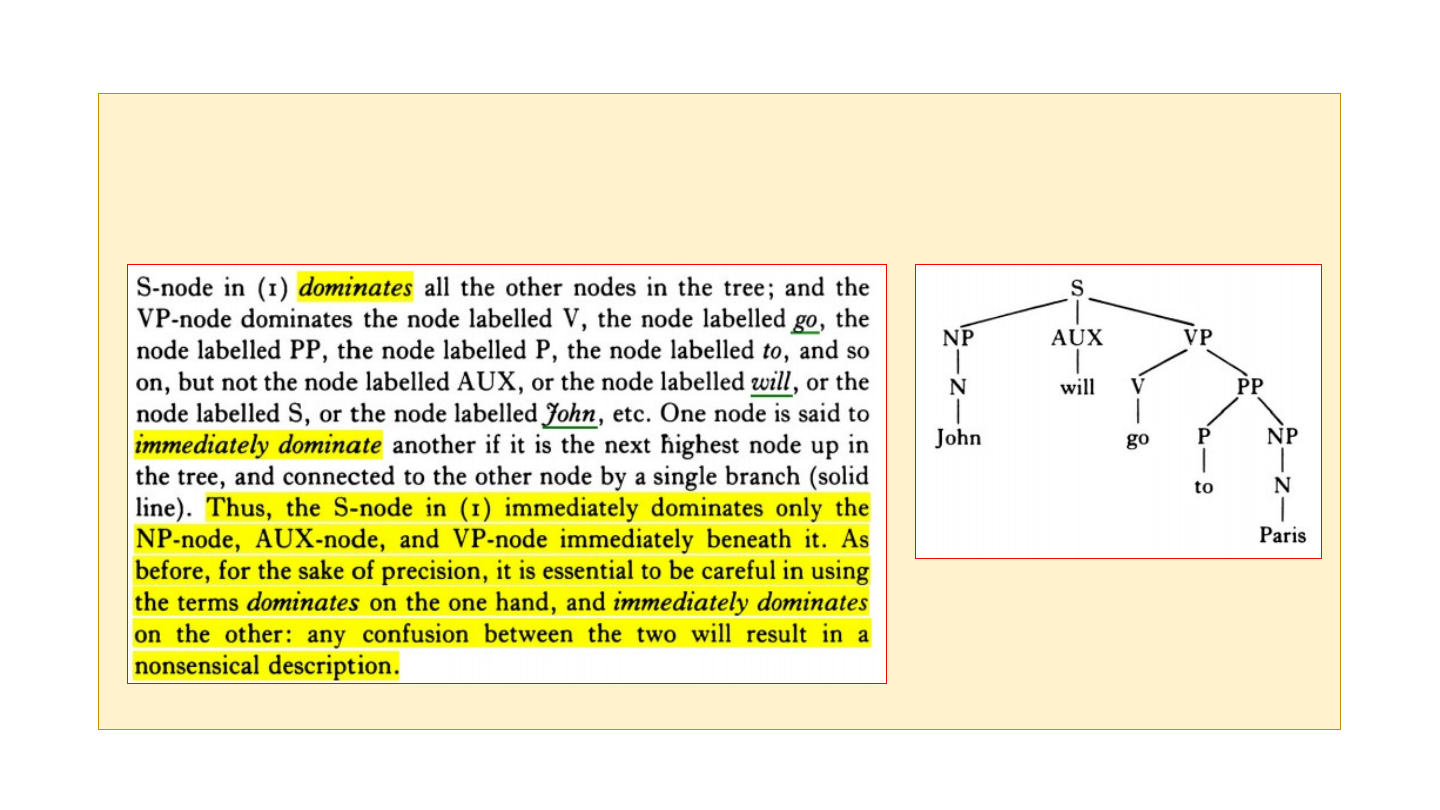
9. Diagnostics for Constituents
- With respect to the Syntactic Categories, the phenomena such as coordination,
intrusion, anaphora, omissibility are closely related with syntactic con-
stituents.
- The following diagnostics might determine whether a given set of words in a
sentence is a constituent or not.

(106) (i) : If ‘wash the dishes’ is a constituent, then the distributional criterion (106) (i)
would tell us that we would expect it to recur as a single structural chunk
in a variety of other sentence-position.
(106) (ii) : The coordination criterion (106) (ii) suggests that ‘wash the dishes’ can be
conjoined with other similar strings.

(106) (iii) : The intrusion criterion (106) (iii) supports a tripartite division of the sen-
tence
into NP-AUX-VP, since it is possible for Adverbs like ‘certainly’ to intrude
between NP and AUX, and between AUX and VP, but not elsewhere:

(106) (iv) : The proform criterion (106) (iv) suggests that ‘wash the dishes’ is a con-
stituent,
since it can serve as the antecedent of a variety of proforms, including those
italicized in below:
(106) (v) : The omissibility criterion (106) (v) suggests that that ‘wash the dishes’ is
a
constituent, since it can be omitted in an appropriate discourse setting:

3. X-bar Syntax
1. P-marker
We have argued that sentences are hierarchically structured into sets of category-
labelled constituents, and that the constituent structure of a sentence can be displayed
graphically in the form of a tree-diagram(or Phrase-marker(P-marker)).
(1) A P-marker is a set of points, connected by lines or branches. The nodes at the
end (bottom) of each complete tree-structure are called terminal nodes; other
node are nonterminal.
(2) There are two types of relation between any given pair of nodes contained in the
same P-marker; precedence, or dominance.

(3) Precedence: To say that one node precedes another is to say simply that it oc-
curs
in the left of another in a given P-marker.
(1)

(4) Dominance: One node dominates another just in case it occurs higher up in
the tree
than the first node.
(1)